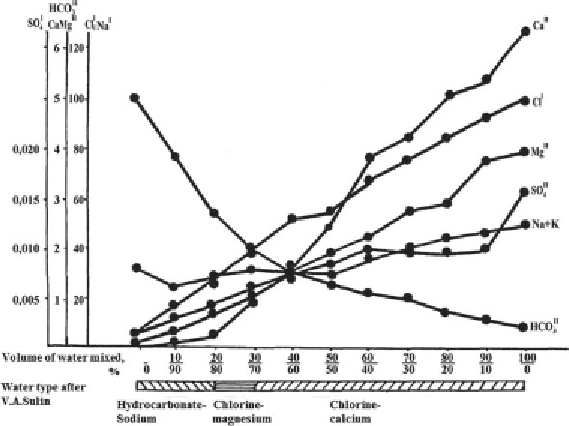Geology Reference
In-Depth Information
Figure 2.21
South Caspian Depression, Kala Field. Changes in the water ion-salt
composition at mixing of hydrocarbonate-sodium and chlorine-calcium types.
Thus, we quoted the data on ground water description and patterns of
spatial distribution together with the materials of mixing their different
types. These data enable, using the combination of hydrochemical param-
eters, the identification within the Meso-Cenozoic section over the flanks
of the South Caspian Depression of two major hydrogeological stages dras-
tically different in the chemistry of their regional background.
These stages are the Middle Jurassic-Valanginian everywhere saturated
with low-salinity hydrocarbonate-sodium waters, and the Hauterivian-
Pliocene with the locally present less saline alkaline-hard and hard-alka-
line formation mixes in the high-salinity chlorine-calcium water medium.
The alkaline water injection differed in different stratigraphic units
both in terms of the vertical and areal penetration. It was mostly con-
trolled by thicknesses and litho-reservoir properties of the section and by
the extent of fault openness. By taking all these factors into account, the
Meso-Cenozoic stratigraphic volume over the flanks of the region can be
subdivided into the Middle Jurassic-Valanginian, Hauterivian-Danian,
Paleogene-Miocene and Middle-Upper Pliocene waterhead complexes.
They all have different participation of the foreign hydrocarbonate-sodium
component in the composition of their formation waters.
The available data enable a new evaluation of the nature and reasons that
caused inversion of the hydrochemical profile over the flanks of the region.

